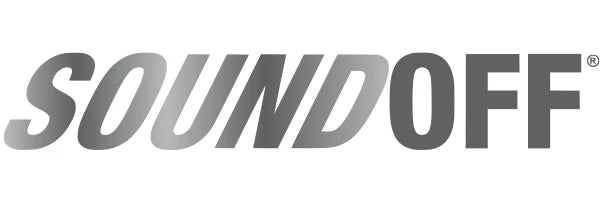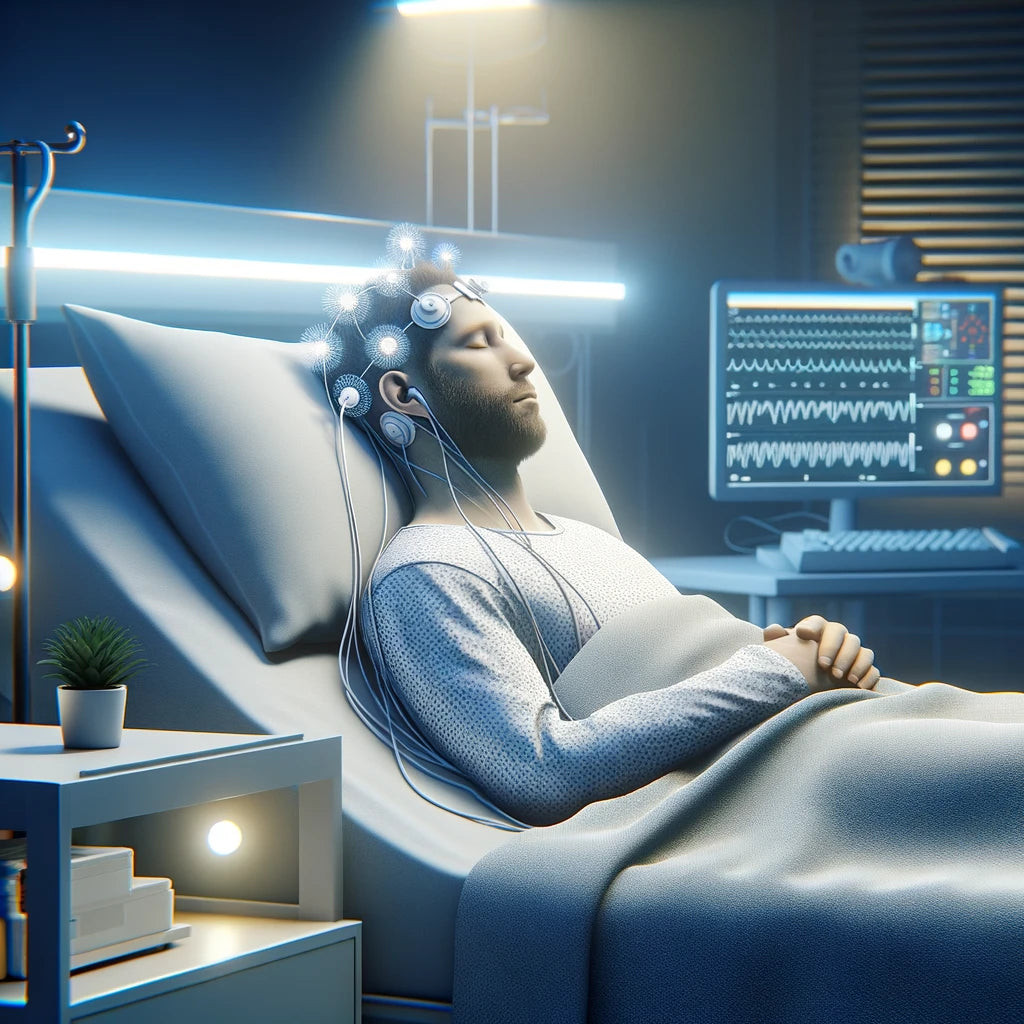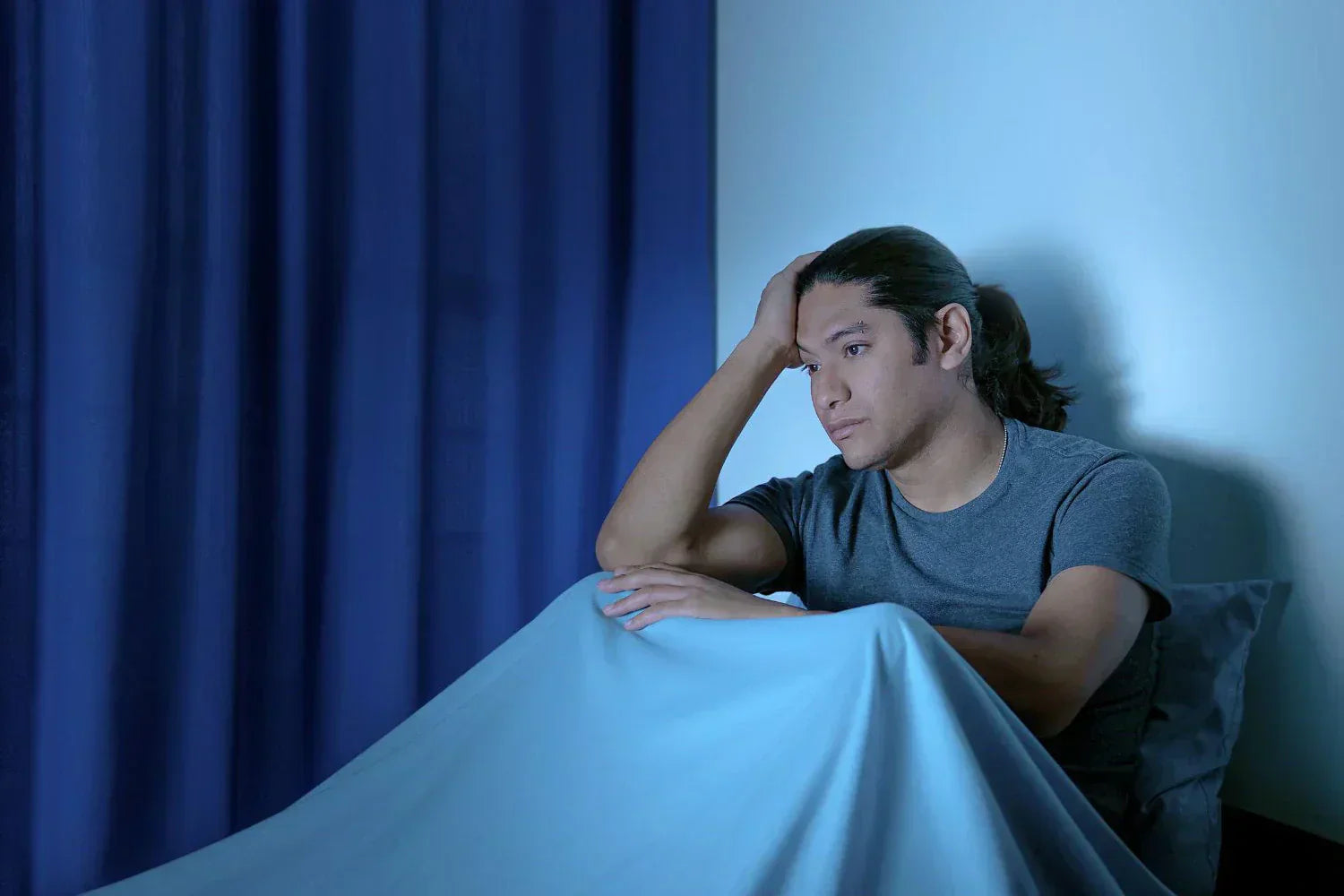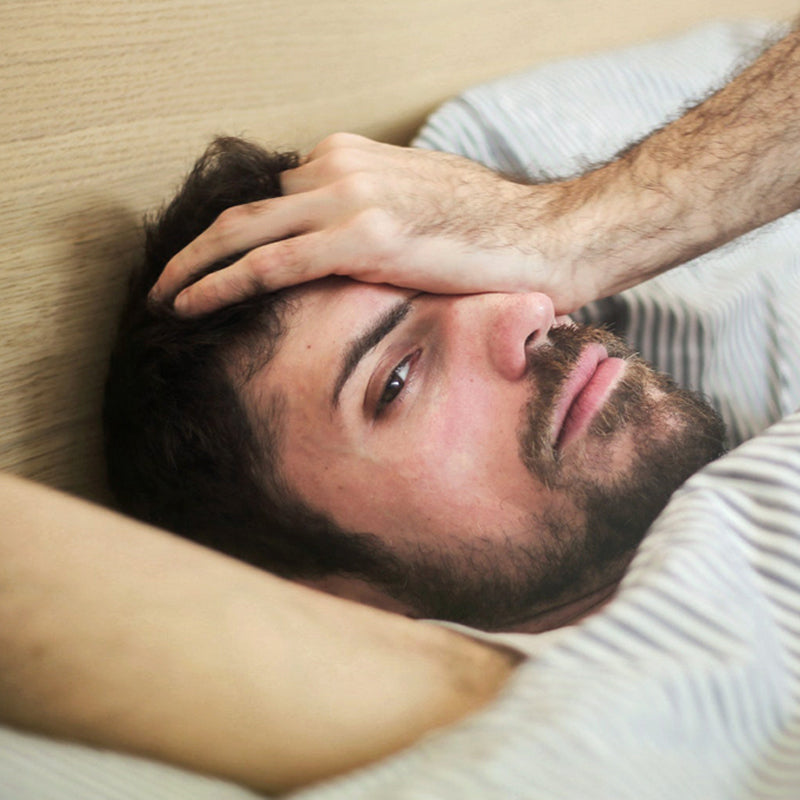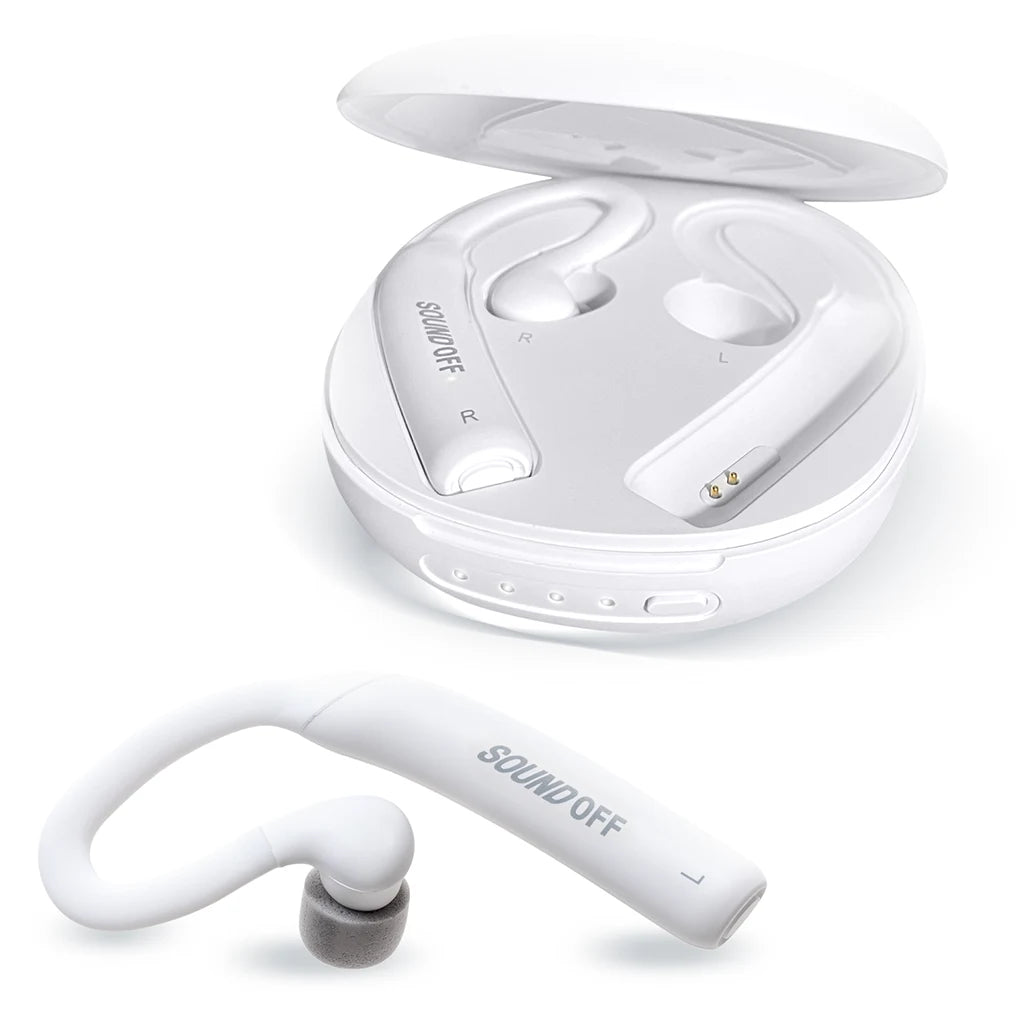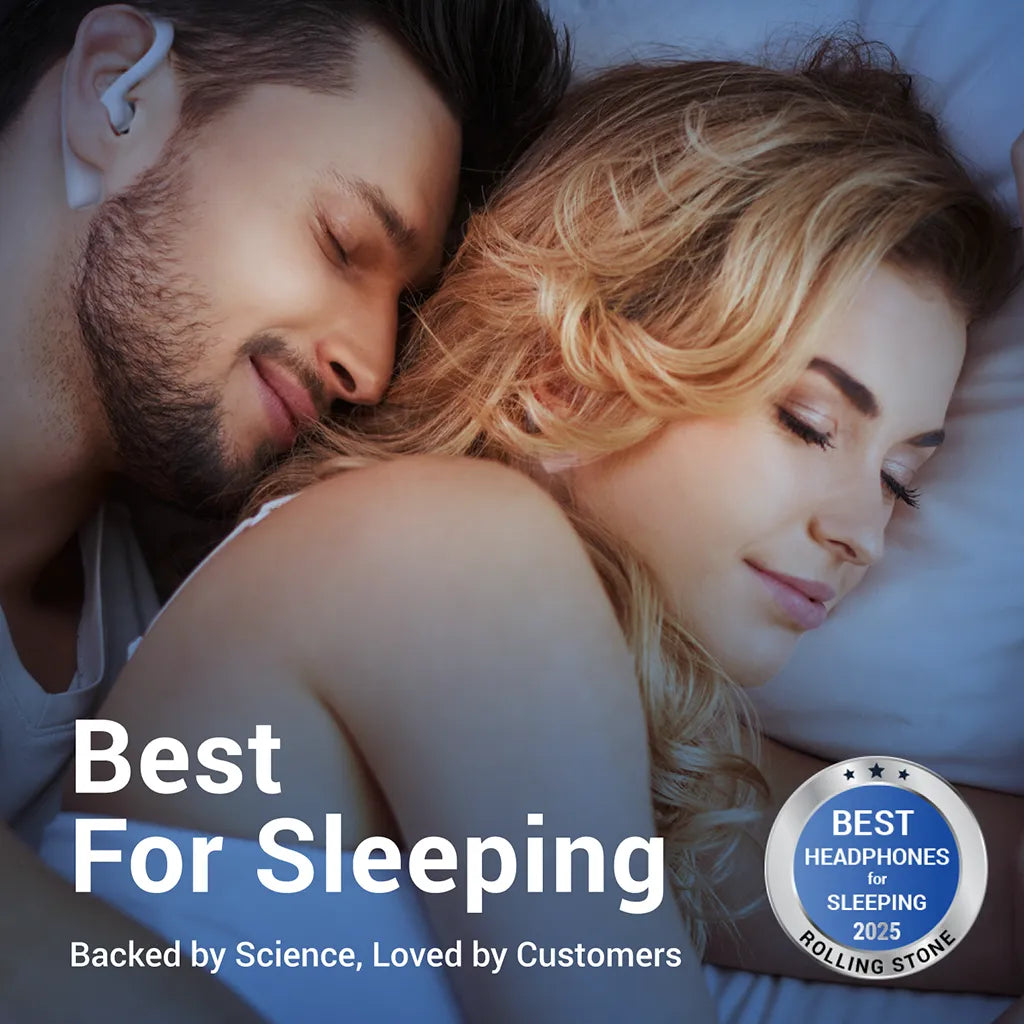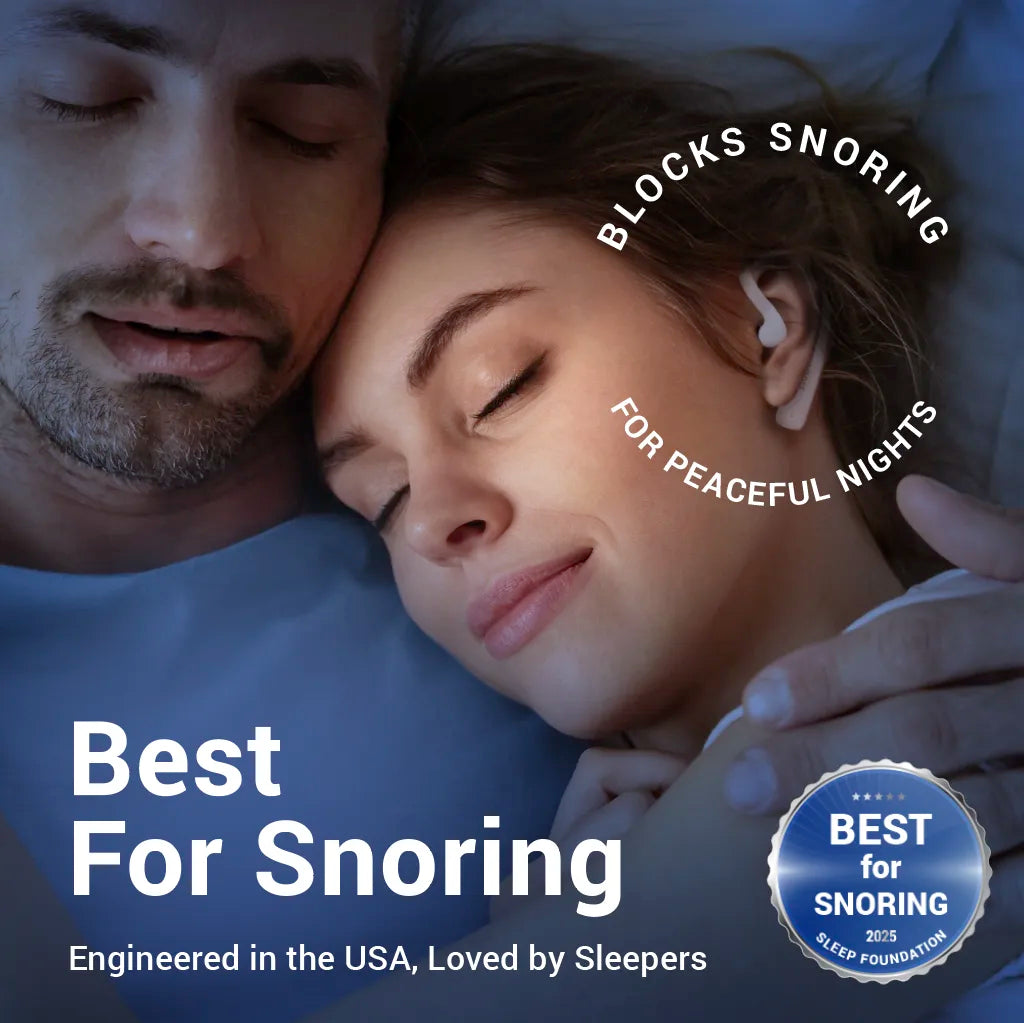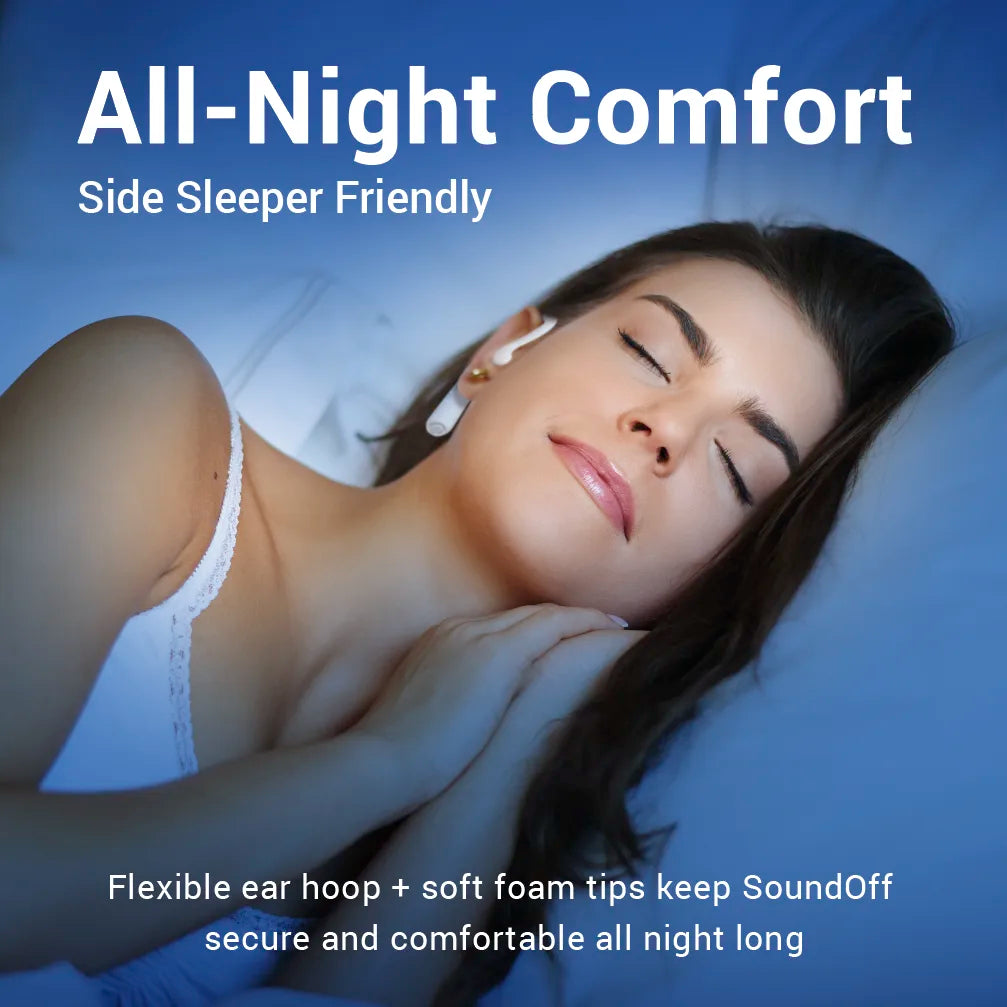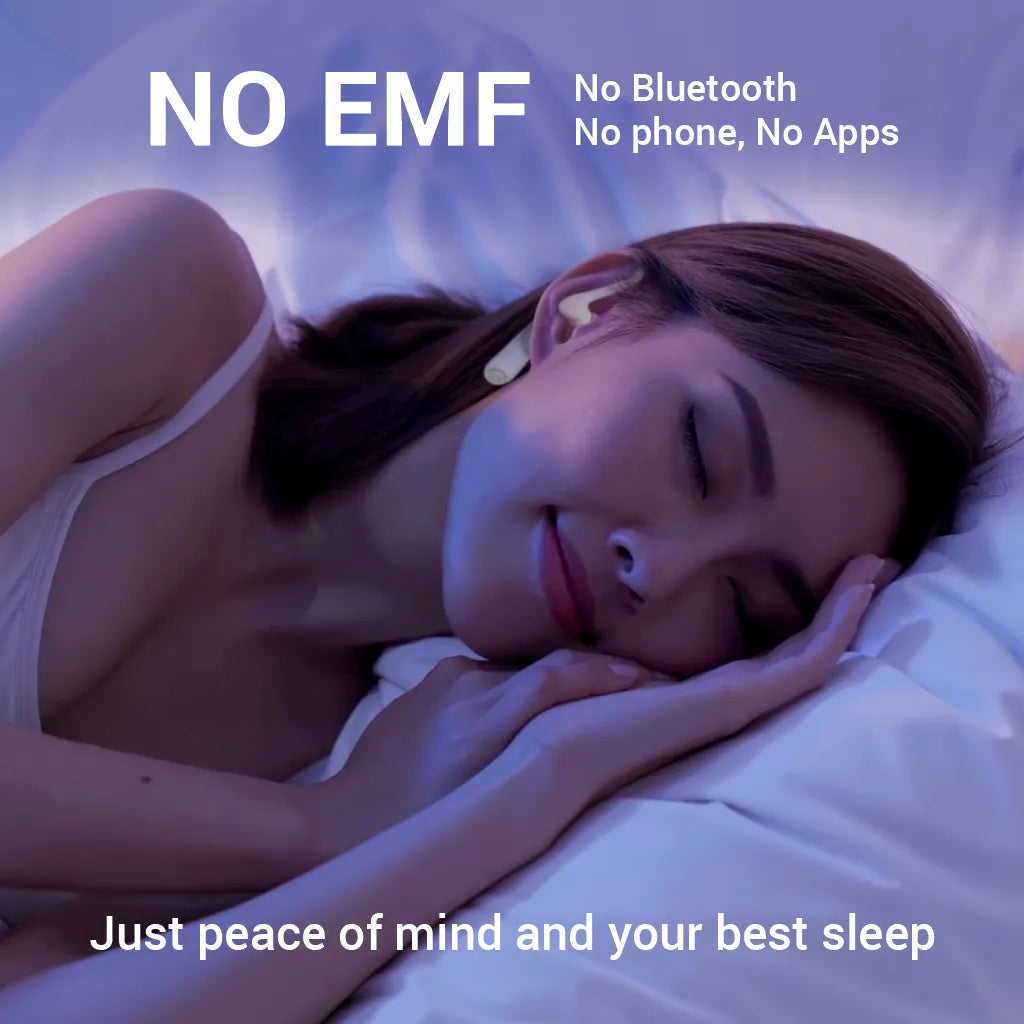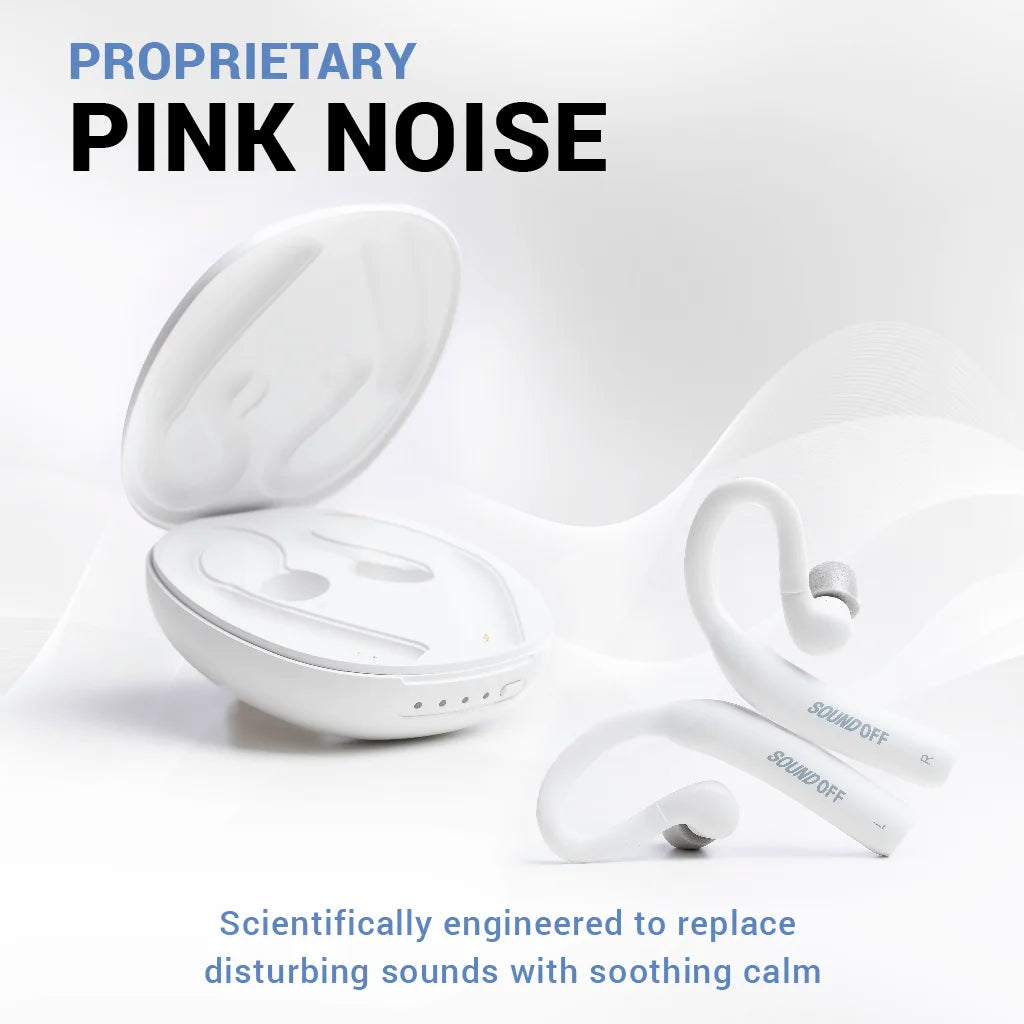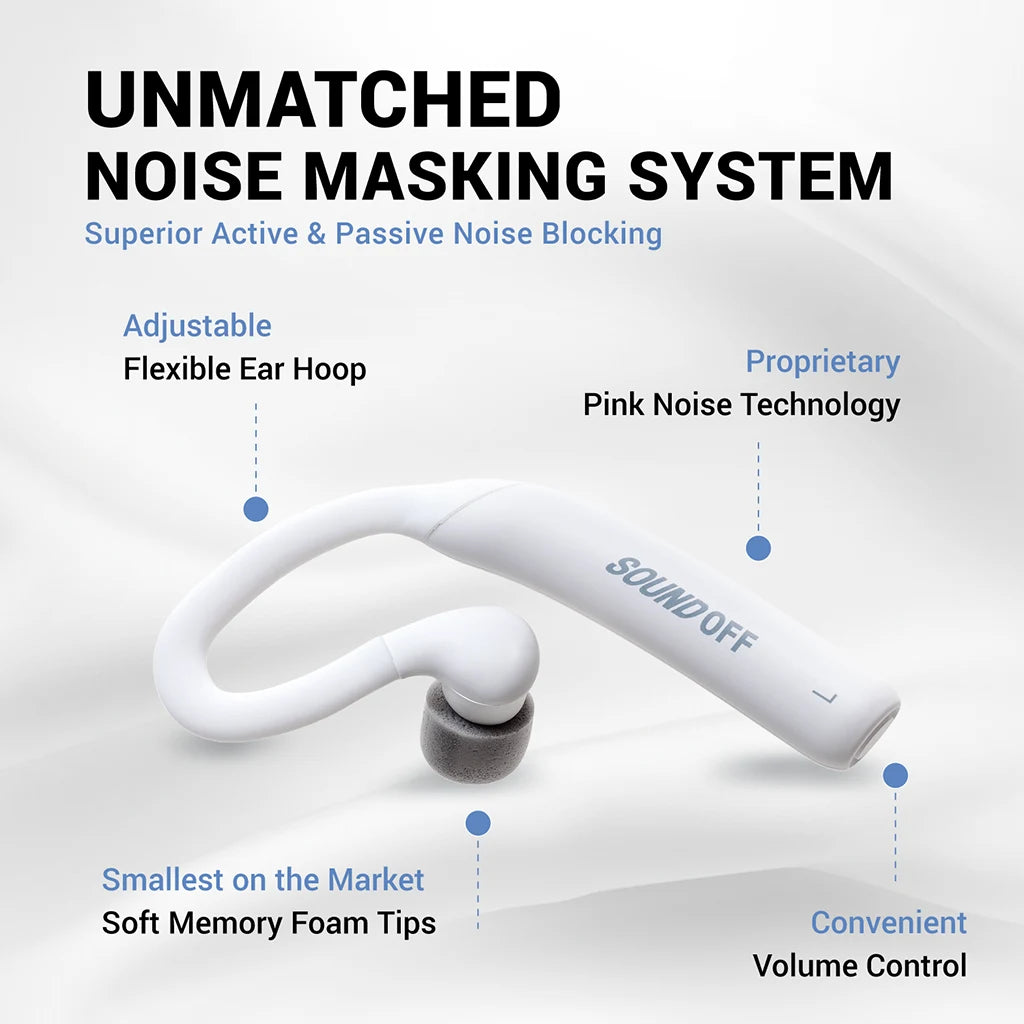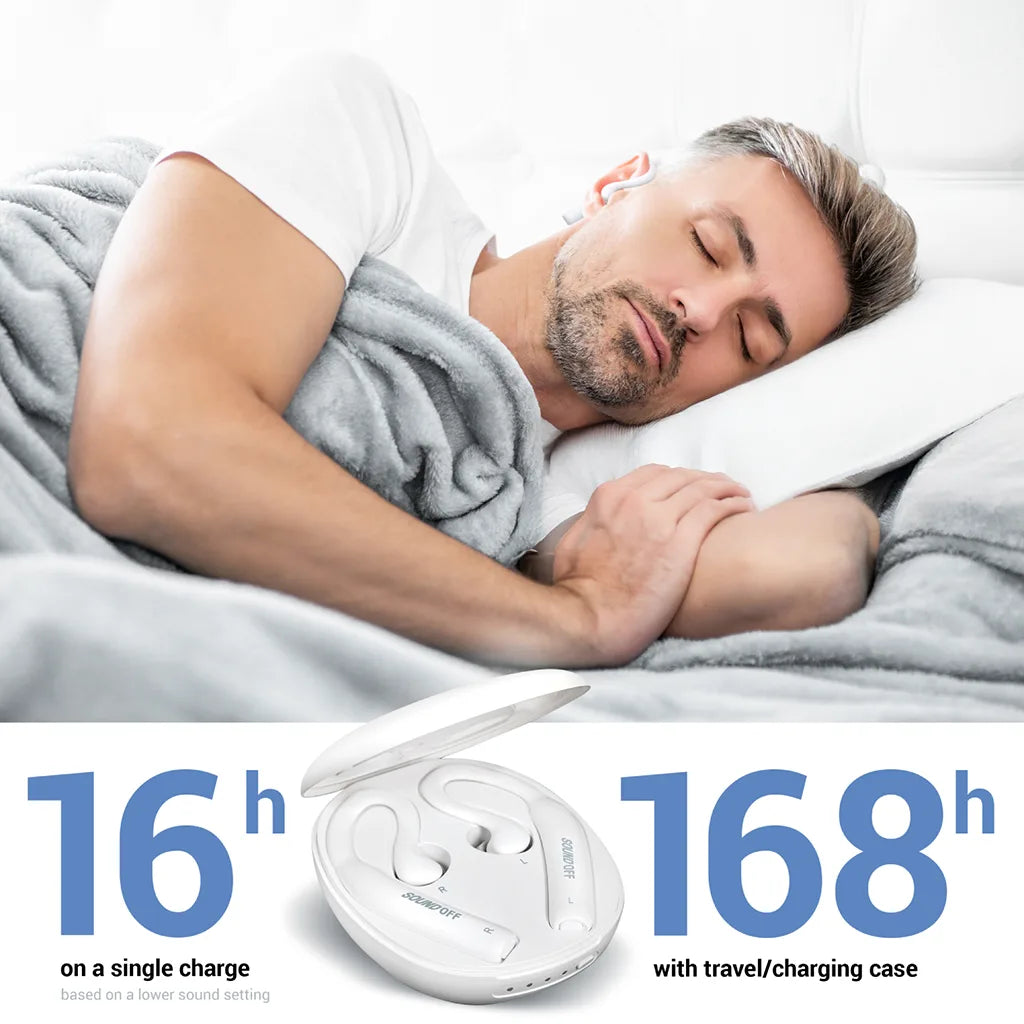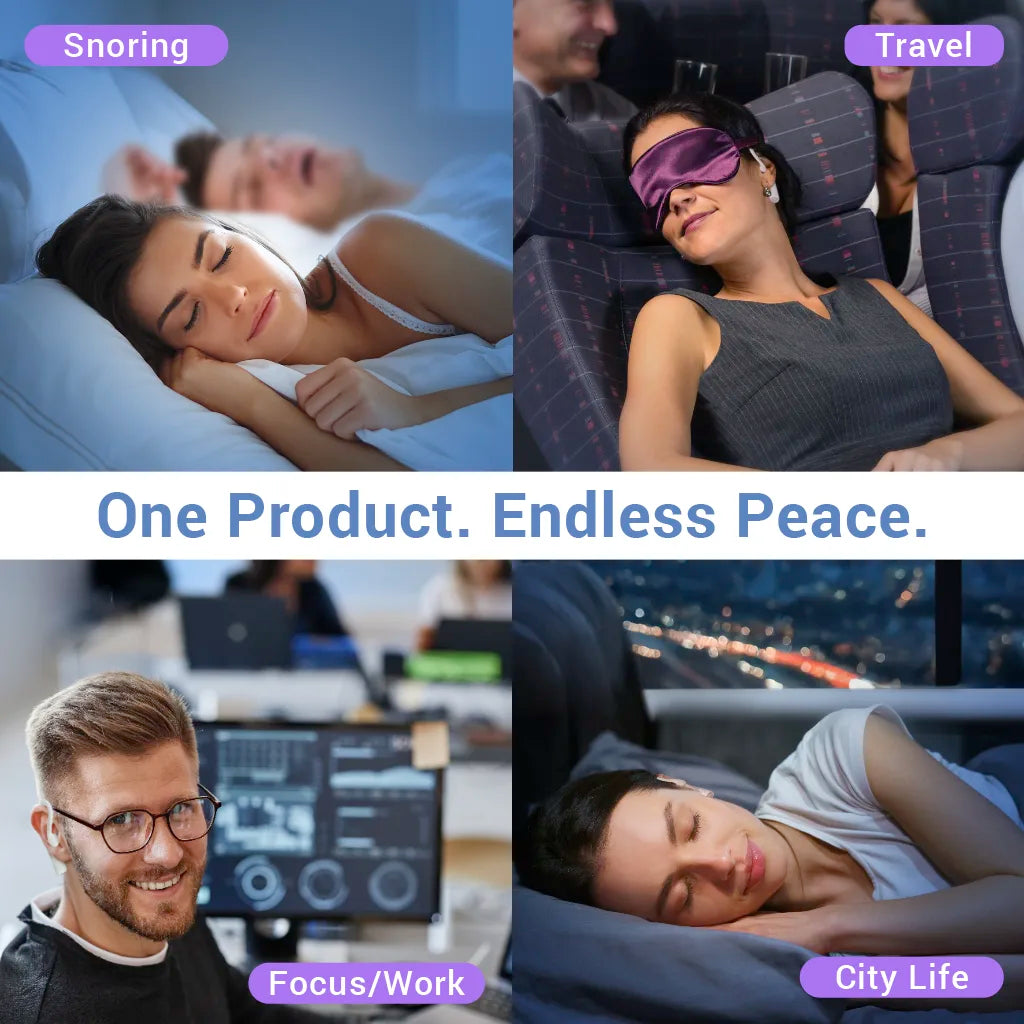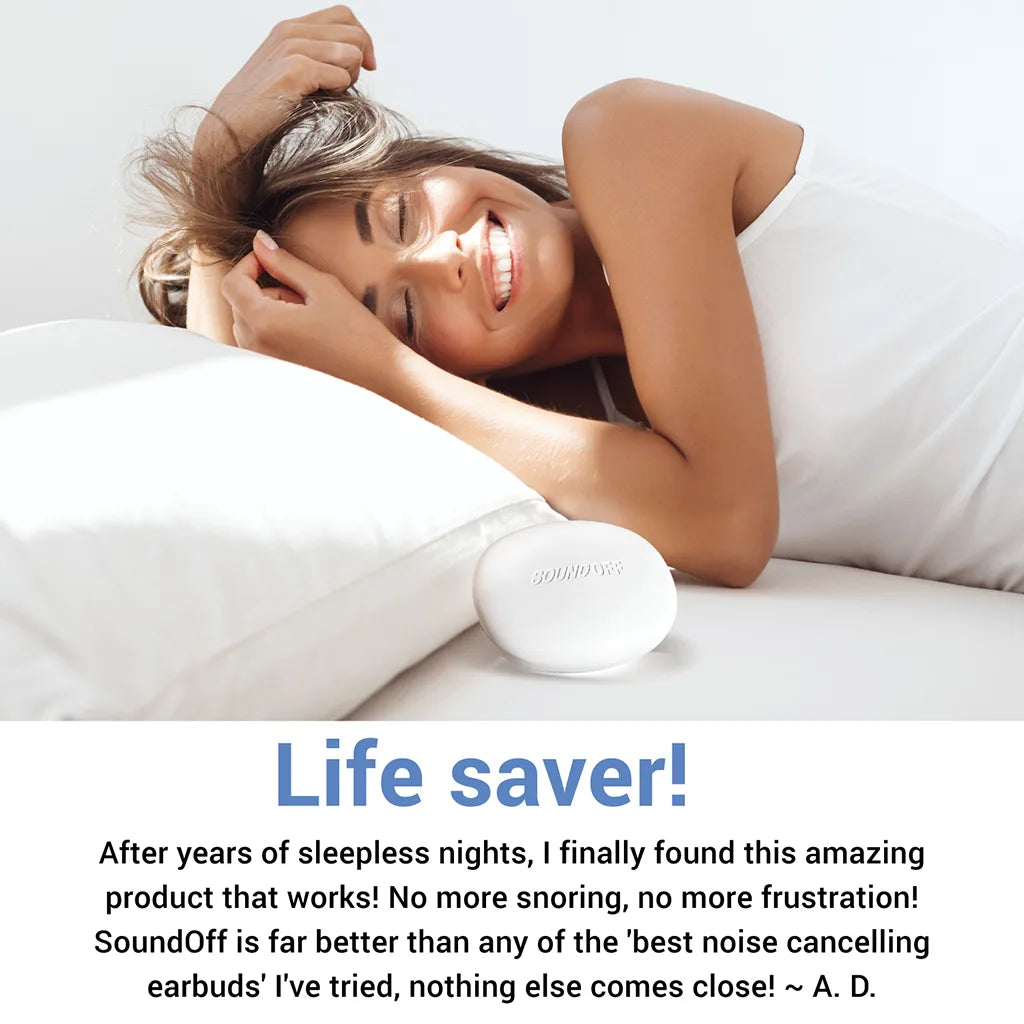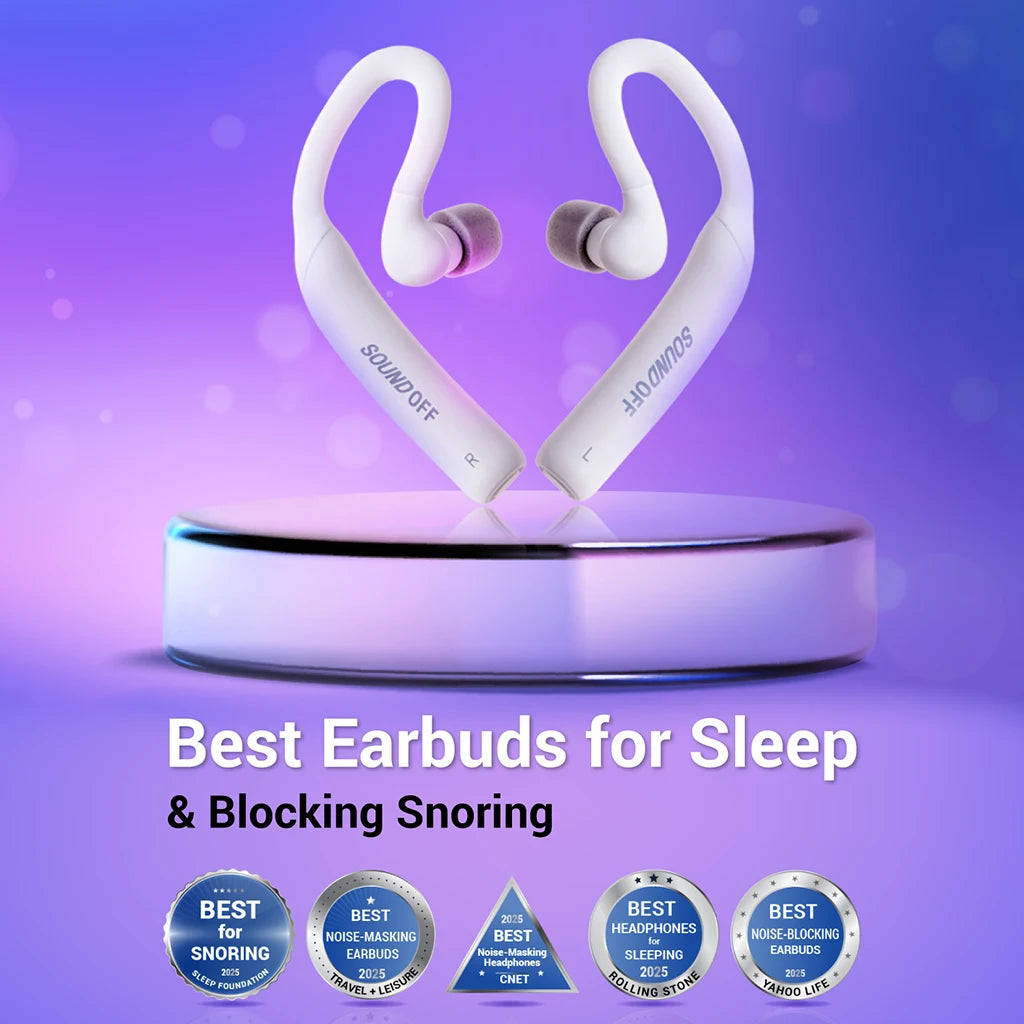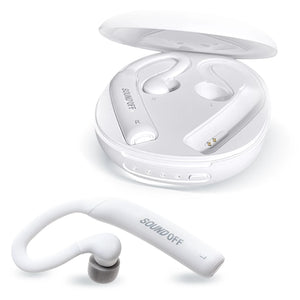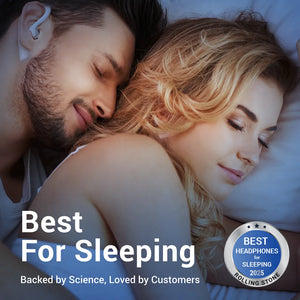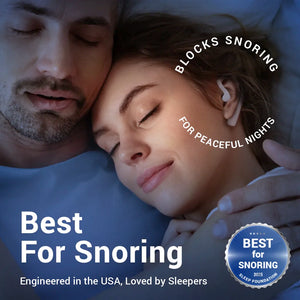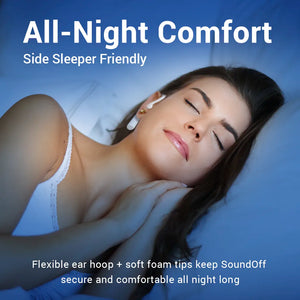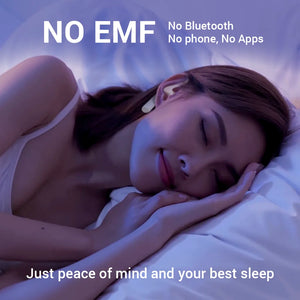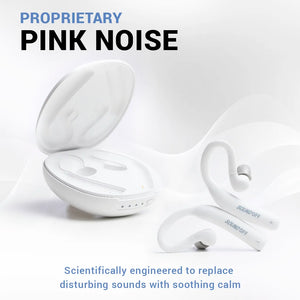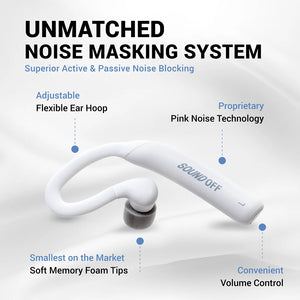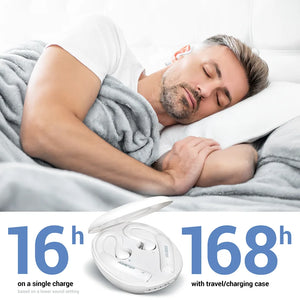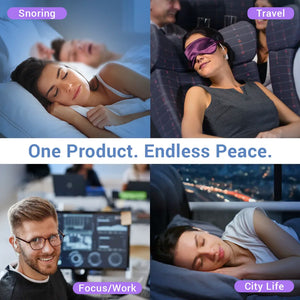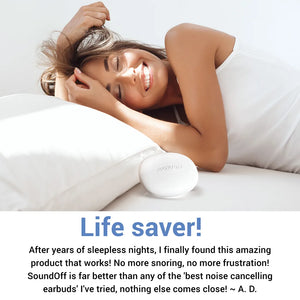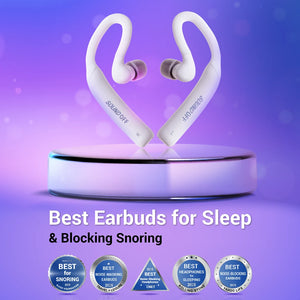Table of Contents
- Introduction to Sleep Studies
- The Purpose of Sleep Studies
- Preparing for and Understanding the Risks of Sleep Studies
- What to Expect During and After a Sleep Study
- Interpreting the Results of Your Sleep Study
- Exploring At Home Sleep Apnea Tests
- Overview of Sleep Doctor Home Sleep Study
- Overview of the SleepImage Ring for At Home Sleep Studies
Introduction to Sleep Studies
Sleep studies, also known as polysomnography, are essential diagnostic tools for identifying various sleep disorders. These studies meticulously track and record critical sleep-related data, including brain wave patterns, blood oxygen levels, heart rhythm, breathing rates, as well as eye and leg movements during sleep.
Typically conducted at specialized sleep centers or within hospital-based sleep disorder units, sleep studies are primarily performed overnight. However, they can also be scheduled during the daytime to accommodate shift workers' unique sleep schedules. Beyond diagnosing sleep disorders, sleep studies play a pivotal role in formulating and refining treatment strategies for individuals already diagnosed with sleep-related conditions.
In recent times, the convenience of in-home sleep studies has gained popularity, especially for diagnosing conditions like obstructive sleep apnea. These at-home sleep studies offer a comfortable and convenient alternative, employing various devices equipped with diverse sensor combinations. These home-based tests focus on monitoring aspects such as breathing patterns, airflow, oxygen saturation, and heart rate, with some devices extending to gather data on blood vessel functions.
The flexibility of at-home sleep studies allows for a more relaxed and natural sleep environment, contributing to more accurate and representative data collection. By embracing both traditional and in-home methods, sleep studies continue to evolve, offering comprehensive solutions for diagnosing and managing sleep disorders effectively.
The Purpose of Sleep Studies: Detailed Insights
Sleep studies, including polysomnography, are pivotal in monitoring and analyzing sleep stages and cycles, revealing disruptions in sleep patterns and their underlying causes. These studies begin by tracking the non-rapid eye movement (NREM) sleep stage, where brain activity slows down, observable through an electroencephalogram (EEG) during the sleep study.
As sleep progresses, the brain transitions into the rapid eye movement (REM) sleep stage, typically after one to two hours of NREM sleep. REM sleep is characterized by quick eye movements and is the phase where most dreaming occurs. Normal sleep involves multiple cycles of NREM and REM stages, typically cycling every 90 minutes. However, sleep disorders can disrupt this natural process.
Healthcare Providers May Recommend a Sleep Study for Various Conditions, Including:
- Sleep Apnea and Breathing Disorders: In these conditions, the patient experiences repeated interruptions in breathing during sleep.
- Periodic Limb Movement Disorder: Characterized by involuntary leg flexing and extending during sleep, often associated with restless legs syndrome. This syndrome causes an uncontrollable urge to move the legs, especially in the evenings or at bedtime.
- Narcolepsy: This condition is marked by excessive daytime sleepiness and sudden sleep attacks.
- REM Sleep Behavior Disorder: Involves acting out dreams during the REM sleep stage.
- Unusual Sleep Behaviors: Such behaviors can include sleepwalking, rhythmic movements, or other complex activities during sleep.
- Persistent Insomnia: This is a condition where individuals consistently struggle to fall asleep or stay asleep.
Understanding these conditions through a sleep study, whether conducted in a clinical setting or as an at-home sleep study, is crucial for accurate diagnosis and effective treatment planning.

Preparing for and Understanding Sleep Studies
Sleep studies, including polysomnography, are generally safe and noninvasive procedures. The most frequently encountered issue is skin irritation, often resulting from the adhesives used to attach sensors to the skin during the sleep study.
Preparation Guidelines for Sleep Studies:
Before undergoing a sleep study, it's crucial to avoid certain substances that can impact sleep patterns. It's recommended to refrain from consuming alcohol or caffeine in the afternoon and evening preceding the test. Both substances can alter sleep cycles and exacerbate symptoms of sleep disorders. Additionally, avoiding afternoon naps before the test is advised.
Personal care preparations are also important. You should bathe or shower prior to the sleep study, but it’s essential to avoid lotions, gels, colognes, or makeup. These products can interfere with the electrodes, the sensors used in the test, affecting the study's accuracy.
At-Home Sleep Apnea Tests:
For those opting for an at-home sleep study, particularly for diagnosing conditions like sleep apnea, the process involves receiving or picking up the necessary equipment from a healthcare provider. Clear instructions on using the equipment will be provided, and it's important to ask questions if any aspect of the test or the equipment is unclear.
This approach allows patients to undergo the sleep study in the comfort of their own home, making the experience more convenient and potentially more representative of their typical sleep behavior.
What to Expect During and After a Sleep Study
During Polysomnography at a Sleep Center:
When undergoing a sleep study at a sleep center, expect to arrive in the evening for an overnight stay. You're encouraged to bring personal items for your bedtime routine and wear your own nightclothes for comfort. The sleep center rooms, designed for polysomnography, resemble hotel rooms with private bathrooms, ensuring a quiet and dark environment conducive to sleep.
The room is equipped with a low-light video camera and an audio system, allowing the polysomnography technologists to monitor and communicate with you remotely. Once you're ready for bed, a technologist will attach sensors to various parts of your body. These sensors are connected to a computer and are designed to record various physiological data such as brain waves, eye movements, heart rate, breathing patterns, blood oxygen levels, and limb movements. If needed, a positive airway pressure (PAP) device, like a CPAP or BPAP machine, might be used during the study to assist with breathing.
During an At-Home Sleep Apnea Test:
For an in-home sleep study, specifically for sleep apnea, you'll follow your regular bedtime routine. You'll need to attach the provided sensors and operate the machine according to the instructions. A sleep log may also be required by your healthcare provider.
After Polysomnography:
Post-polysomnography at a sleep center involves sensor removal and the resumption of your normal activities. A follow-up appointment will be scheduled to discuss the results.
Following an at-home sleep apnea test, you'll remove the sensors upon waking and return the equipment as instructed. Some home sleep apnea tests use disposable equipment for added convenience.
Interpreting the Results of Your Sleep Study
Data Analysis from Sleep Studies:
The data collected during a sleep study, whether at a sleep center or through an at-home sleep study, offer comprehensive insights into your sleep patterns. Here are some key aspects and what they may indicate:
- Sleep Stages Analysis: By examining brain waves and eye movements, healthcare professionals can assess your sleep stages and identify disruptions. Such disruptions could indicate sleep disorders like narcolepsy or REM sleep behavior disorder.
- Respiratory and Cardiac Indicators: Atypical changes in heart rate, breathing patterns, and blood oxygen levels during sleep often point towards conditions like sleep apnea.
- PAP and Oxygen Use: The effectiveness of PAP or oxygen devices during the study helps in determining the most suitable settings for potential home use.
- Movement Disorders: Frequent leg movements disrupting sleep could signify periodic limb movement disorder.
- Sleep Behavior Observations: Unusual behaviors or movements during sleep may suggest REM sleep behavior disorder or other sleep conditions.
Initially, a polysomnography technologist evaluates the data to chart your sleep stages and cycles. This is then reviewed by your sleep center provider.
Home Sleep Apnea Test Results:
For those who have completed an at-home sleep apnea test, the collected data is analyzed by your healthcare provider. Results may take a few days or weeks to be finalized.
During a follow-up appointment, your provider will discuss the results with you, outlining any necessary treatments or further evaluations. In some cases, if an at-home sleep apnea test doesn't provide sufficient information, a more comprehensive sleep study at a sleep center may be recommended.
Exploring At-Home Sleep Apnea Tests
Overview of At-Home Sleep Apnea Testing:
An at-home sleep apnea test is a portable device used to diagnose obstructive sleep apnea (OSA) in the comfort of your home. Throughout the night, it monitors breathing patterns and oxygen levels to detect apneas, or pauses in breathing. The test assesses the severity of OSA by calculating the average number of breathing interruptions per hour.
While polysomnography, an overnight sleep study conducted in a lab, remains the most precise method for diagnosing obstructive sleep apnea, at-home tests offer a more accessible alternative. These tests are particularly valuable for individuals facing long wait times or geographical barriers to accessing a sleep center.
Appropriateness and Limitations of Home Tests:
At-home sleep apnea tests are suitable for some patients, provided the results are interpreted by a qualified sleep specialist. However, for individuals with suspected additional medical conditions or sleep disorders, polysomnography is the recommended approach.
- Respiratory effort, breathing patterns, and chest movements
- Heart rate and blood oxygen saturation
- Actigraphy to track nocturnal movement and motor activity
- Sleep positioning and changes in position
- Snoring frequency and intensity
It's important to note that at-home tests primarily focus on apnea-related metrics and do not assess overall sleep quality. In contrast, polysomnography offers a comprehensive evaluation of sleep quality and patterns, in addition to apnea-specific measurements.
Considerations for Choosing a Sleep Test:
When deciding between an at-home test and an onsite sleep study, consider the limitations of at-home testing in assessing overall sleep quality. Polysomnography provides a more thorough analysis, beneficial for a holistic understanding of your sleep health.
The Sleep Doctor Home Sleep Test

Overview of Sleep Doctor Home Sleep Test:
The Sleep Doctor Home Sleep Test is a notable option for those interested in an at-home sleep study, particularly for diagnosing obstructive sleep apnea. Priced at $349, it's designed for individuals who prefer to avoid an overnight stay at a sleep lab and is suitable for adults aged 18 and above.
Key Features:
- User-Friendly Design: The device boasts a comfortable wearable design, similar to a lightweight wristwatch.
- Measurement Capabilities: It measures seven apnea-related metrics, utilizing the wrist, finger, and neck for sensor contact points.
- Portability: This device is travel-friendly, allowing for easy usage anywhere.
How it Works:
The Sleep Doctor Home Sleep Test is a sophisticated choice among at-home sleep studies. It includes a wrist band, a fingertip sensor, and a connecting cord. Notably, it does not require nasal tubes or body straps, making it user-friendly.
The device is ideal for those suspecting obstructive sleep apnea but unable to schedule a timely polysomnography or unwilling to spend a night in a sleep lab. It measures various metrics like peripheral arterial tone (PAT) for respiratory activity, actigraphy for nocturnal movements, heart rate, blood oxygen levels, sleep position, snoring intensity, and chest motion.
Usage and Results:
Upon receiving the device, users are scheduled for a virtual appointment with a board-certified physician to discuss physical health and instructions for using the device. The test can generate results after just one night. The physician then reviews these results and provides a personalized sleep report, including treatment recommendations.
Additional Information:
- Versatility: The test can be conducted in any setting, including your own bed.
- Regulatory Approval: The device is FDA-approved and may be covered partially by insurance.
- Shipping and Returns: Standard shipping is free, with expedited delivery available for an extra charge. Unopened orders can be returned within 60 days of purchase.
The SleepImage Ring for At Home Sleep Studies

FDA-Cleared SleepImage System:
The SleepImage system, including the SleepImage Ring, is an FDA-cleared solution for diagnosing and managing sleep disordered breathing, including obstructive sleep apnea (OSA) and central sleep apnea (CSA). Classified as Software as a Medical Device (SaMD), SleepImage is a sophisticated technology designed for medical purposes, compatible with various hardware devices, with the SleepImage Ring being the most commonly used.
Features and Usage of the SleepImage Ring:
The SleepImage Ring stands out for its ease of use and comfort, appealing to those who prefer simpler at-home sleep tests without numerous components. This system is especially suitable for individuals seeking an alternative to traditional sleep studies.
During the sleep study, the ring captures raw physiological data, streaming it to a mobile app. This data is then uploaded to the SaMD for analysis and auto-scoring. The comprehensive data is subsequently reviewed, interpreted, and manually scored by a physician for accurate diagnosis of OSA and CSA.
The SleepImage system is versatile, suitable for use in children over 2 years old and adults. It serves as a prescription medical device, available to licensed healthcare professionals for use with their patients.
Understanding the Functionality of the SleepImage Ring for At-Home Sleep Studies
How the SleepImage System Operates:
The SleepImage Ring, an integral part of the SleepImage System, leverages signals regulated by the autonomic nervous system during sleep to assess various sleep-related parameters. This includes:
- Distinguishing between wakefulness and sleep
- Differentiating sleep states (NREM vs. REM)
- Evaluating sleep stages (stable vs. unstable NREM)
- Measuring objective sleep quality using the FDA-cleared Sleep Quality Index (SQI)
- Monitoring respiration, blood oxygenation (SpO2), and movement (actigraphy)
The SleepImage System has received FDA clearance to provide output comparable to a polysomnography (PSG) test, particularly in diagnosing obstructive and central sleep apnea. It features an auto-scored SleepImage Apnea Hypopnea Index (sAHI) that physicians can manually review and re-score, based on the raw data collected.
Steps to Using the SleepImage Ring:
- Step 1: Access to the SleepImage Ring is restricted to healthcare providers. To use this at-home sleep study tool, find a sleep specialist who incorporates it into their diagnostic processes.
- Step 2: Upon locating a provider who offers the SleepImage Ring, they will provide the device for your use. You will be required to download the corresponding app and follow specific instructions to conduct the test.
- Step 3: After completing the test, stop the test via the app, which then automatically uploads the data using Wi-Fi or cellular network. Your doctor can then access this data, validate or reject the results, manually review or edit them, and compile a detailed diagnostic report.
- Step 4: After completing your at-home sleep study using the SleepImage Ring, return the device to your healthcare provider and schedule a follow-up appointment to discuss the results. This step allows for a comprehensive review of the findings and a discussion regarding the most effective treatment strategies for your diagnosed condition.
Evaluating the SleepImage Ring: Advantages and Considerations
Advantages of the SleepImage Ring for At-Home Sleep Studies:
- Minimal Intrusiveness: The SleepImage Ring's single, unobtrusive design minimizes sleep disruption and discomfort.
- Rechargeability: The ring can be easily recharged using a USB port, convenient for repeated tests.
- Comprehensive Data Collection: The SleepImage Ring provides extensive information, eliminating the need for an overnight stay at a sleep center.
Considerations When Using the SleepImage Ring:
- Cost and Accessibility: For primary monitoring of blood oxygen levels and pulse data, more accessible consumer devices might be more affordable.
- Measurement Limitations: The SleepImage Ring focuses on autonomic nervous system functions but does not track body position or brain waves.
- Possibility of Additional Testing: Post-use of the SleepImage System, further testing at a hospital or clinic may still be necessary. Additionally, if CPAP therapy is prescribed, a titration test might be required to determine the correct pressure settings for the CPAP machine.
